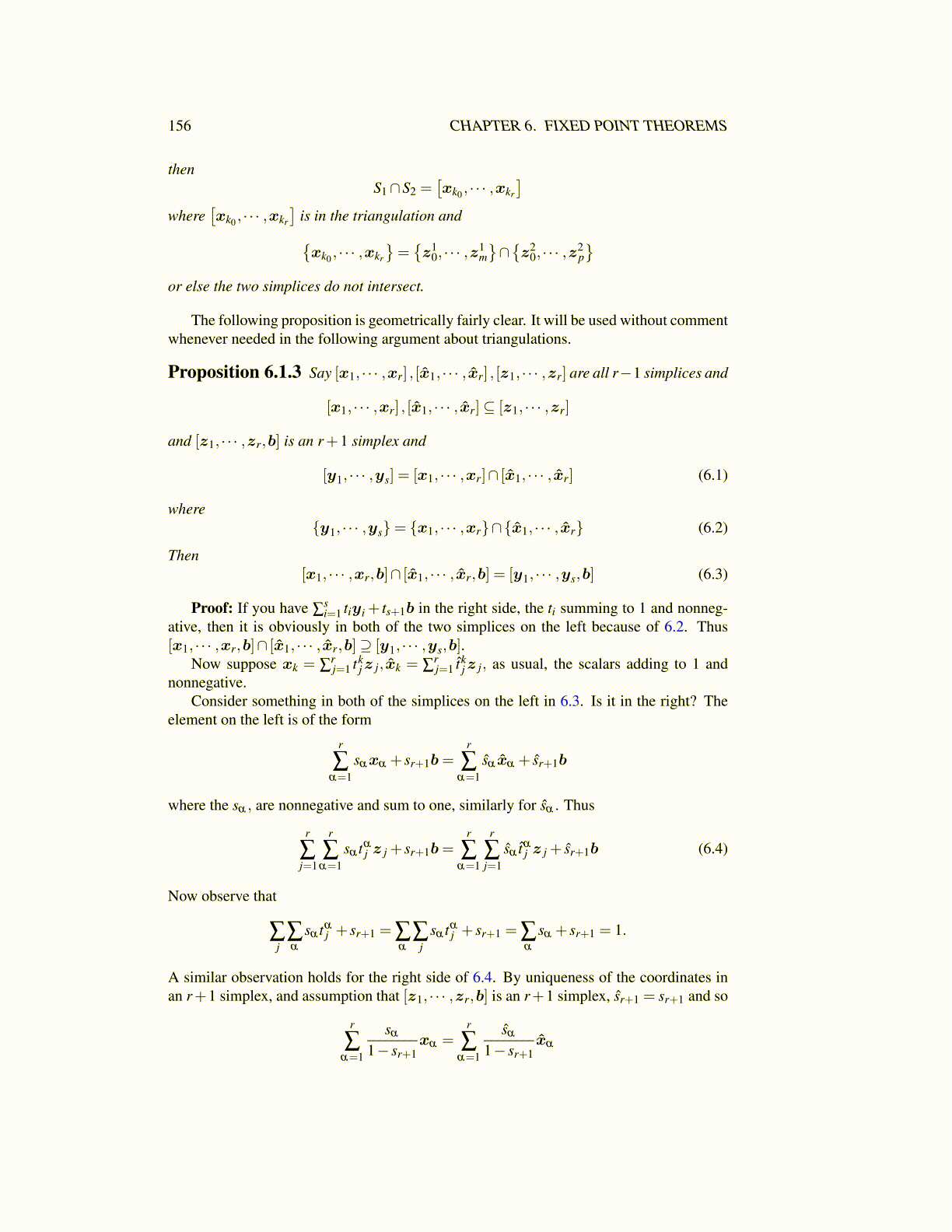
156 CHAPTER 6. FIXED POINT THEOREMS
thenS1∩S2 =
[xk0 , · · · ,xkr
]where
[xk0 , · · · ,xkr
]is in the triangulation and{xk0 , · · · ,xkr
}={z1
0, · · · ,z1m}∩{z2
0, · · · ,z2p}
or else the two simplices do not intersect.
The following proposition is geometrically fairly clear. It will be used without commentwhenever needed in the following argument about triangulations.
Proposition 6.1.3 Say [x1, · · · ,xr] , [x̂1, · · · , x̂r] , [z1, · · · ,zr] are all r−1 simplices and
[x1, · · · ,xr] , [x̂1, · · · , x̂r]⊆ [z1, · · · ,zr]
and [z1, · · · ,zr,b] is an r+1 simplex and
[y1, · · · ,ys] = [x1, · · · ,xr]∩ [x̂1, · · · , x̂r] (6.1)
where{y1, · · · ,ys}= {x1, · · · ,xr}∩{x̂1, · · · , x̂r} (6.2)
Then[x1, · · · ,xr,b]∩ [x̂1, · · · , x̂r,b] = [y1, · · · ,ys,b] (6.3)
Proof: If you have ∑si=1 tiyi + ts+1b in the right side, the ti summing to 1 and nonneg-
ative, then it is obviously in both of the two simplices on the left because of 6.2. Thus[x1, · · · ,xr,b]∩ [x̂1, · · · , x̂r,b]⊇ [y1, · · · ,ys,b].
Now suppose xk = ∑rj=1 tk
jz j, x̂k = ∑rj=1 t̂k
jz j, as usual, the scalars adding to 1 andnonnegative.
Consider something in both of the simplices on the left in 6.3. Is it in the right? Theelement on the left is of the form
r
∑α=1
sαxα + sr+1b=r
∑α=1
ŝα x̂α + ŝr+1b
where the sα , are nonnegative and sum to one, similarly for ŝα . Thus
r
∑j=1
r
∑α=1
sα tαj z j + sr+1b=
r
∑α=1
r
∑j=1
ŝα t̂αj z j + ŝr+1b (6.4)
Now observe that
∑j∑α
sα tαj + sr+1 = ∑
α
∑j
sα tαj + sr+1 = ∑
α
sα + sr+1 = 1.
A similar observation holds for the right side of 6.4. By uniqueness of the coordinates inan r+1 simplex, and assumption that [z1, · · · ,zr,b] is an r+1 simplex, ŝr+1 = sr+1 and so
r
∑α=1
sα
1− sr+1xα =
r
∑α=1
ŝα
1− sr+1x̂α